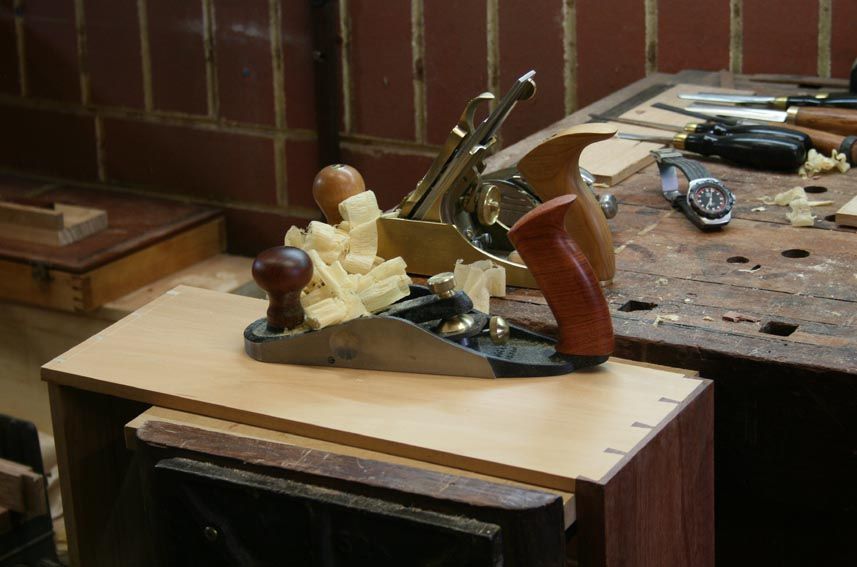Howzit them Canadians get to vote twice and us Yanks and the Mexicans only get to vote once? We're all Norte Americanos.
As a guess, I'll bet 94-98% of all planes ever made have been bevel down. This will certainly skew the data.
I use both and while often the choice is random, more often, it is based on what the first swipe or two on a particular piece of wood shows me. If whatever I used doesn't work, I shift planes until I get one that does.
Last edited by Dave Anderson NH; 06-05-2012 at 12:28 PM.
Dave Anderson
Chester, NH




 Reply With Quote
Reply With Quote


 What is my style? It comes down to sharpening. It is easier to free hand hone a blade for a BD plane than one for a BU plane. With the exception of a 25 degree bed BU smoother I built, all BU planes have a bed of 12 degrees (as you know). Since it is impractical to hone on a hollow grind, a honing guide is necessary to create a micro secondary bevel at the necessary angle. Now this is not an issue for those who typically prefer honing guides (you guys can simply enjoy the BU planes without a fuss), but I prefer free handing. It is a testimony to the performance of the BU planes that I use them as much as I do (and I use them a great deal). Once sharpened, they are a joy to use. It is just that I lack the patience to use a guide. Consequently, many of my planes are actually BD planes. I can whip out a blade, quickly renew an edge, and reset it as quickly. But they are not as light and nimble as the BU planes.
What is my style? It comes down to sharpening. It is easier to free hand hone a blade for a BD plane than one for a BU plane. With the exception of a 25 degree bed BU smoother I built, all BU planes have a bed of 12 degrees (as you know). Since it is impractical to hone on a hollow grind, a honing guide is necessary to create a micro secondary bevel at the necessary angle. Now this is not an issue for those who typically prefer honing guides (you guys can simply enjoy the BU planes without a fuss), but I prefer free handing. It is a testimony to the performance of the BU planes that I use them as much as I do (and I use them a great deal). Once sharpened, they are a joy to use. It is just that I lack the patience to use a guide. Consequently, many of my planes are actually BD planes. I can whip out a blade, quickly renew an edge, and reset it as quickly. But they are not as light and nimble as the BU planes. 


